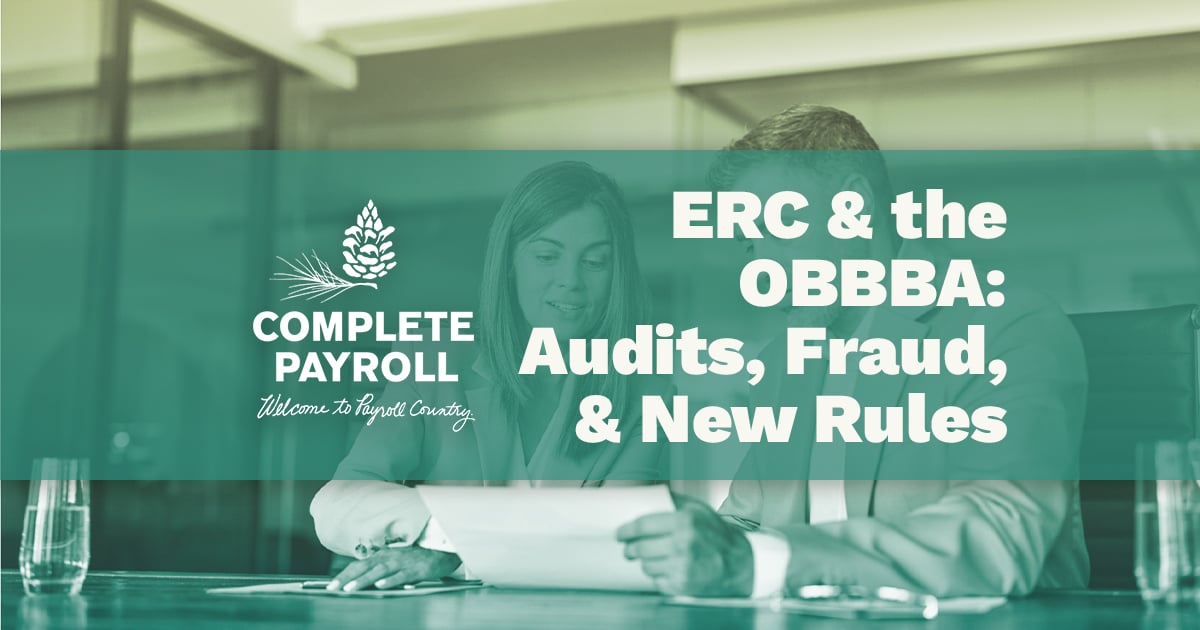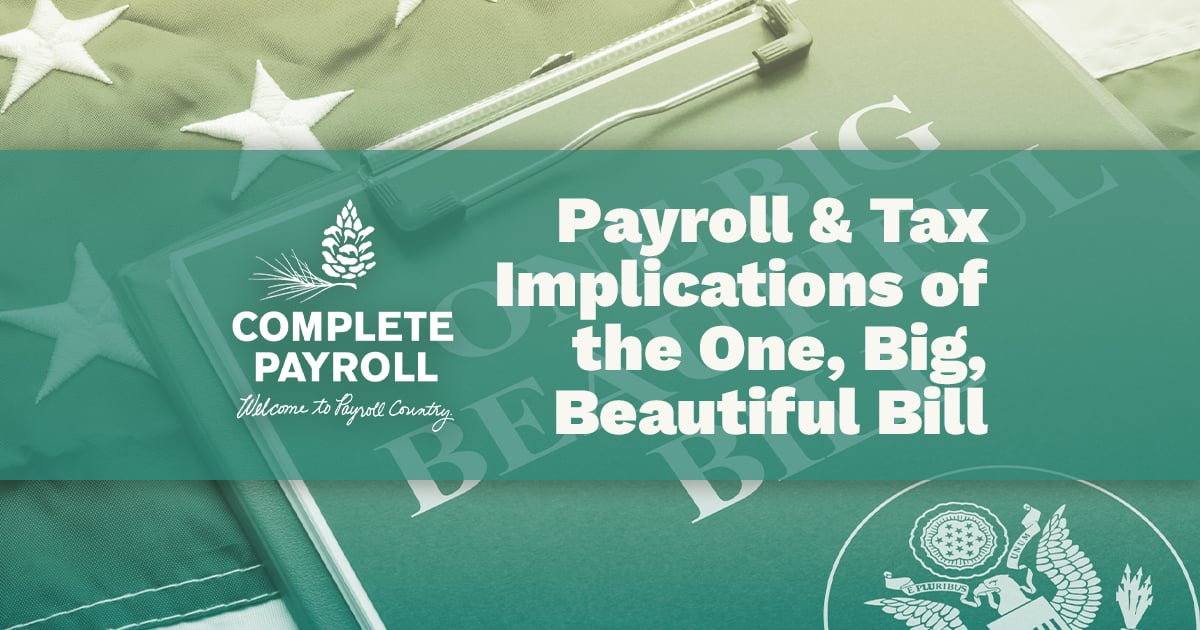IRS Alerts on Incorrect Employee Retention Credit Claims
Written by Rick Fish, Jr., C.P.P.

The IRS has issued a list of seven red flags to identify a potentially fraudulent or inaccurate claim for the Employee Retention Tax Credit (ERTC/ERC).
This, in response to a growing number of ERC claims that have been found to be either filed for businesses who did not qualify, or filed for businesses who do qualify, but done inaccurately.
The Employee Retention Credit is a refundable tax credit that certain businesses are eligible to receive if they or their employees were affected by the COVID-19 pandemic. The purpose of the ERC is to help businesses that struggled during the pandemic yet still remained open and paying their employees. This tax credit allows eligible businesses to receive a tax credit if they paid their employees qualifying wages from March 2020 up to October 1st, 2021.
Businesses who were affected negatively by the pandemic can apply for the ERC credit Businesses by March 31, 2024 for 2020 wages, and by March 31, 2025 for 2021 wages.
7 Signs of an Illegitimate ERC Claim
1. Too Many Quarters Being Claimed
One of the major ERC warning signs of not being eligible is when a business claims too many quarters. The only quarters that are eligible for ERC are the last two weeks of March 2020 (this falls under quarter one), quarter two, quarter three, and quarter four. If your employee worked during these quarters and was paid $10,000 or more in annual wages, then an employer can be eligible to receive a credit of 50% of those wages per employee.
In 2021, the quarters eligible are quarters one, quarter two, and quarter three. For businesses that started up during COVID-19, these new businesses can also claim quarter four. Another change for 2021 is that you are now eligible to claim the ERC if you paid up to $10,000 in employee wages per quarter. You can also get a tax credit of 70% back, compared to only 50% for the previous year.
2. Government Orders That Don’t Qualify.
If your business suspended operations due to a government order that either prevented the entirety or a portion of your business from staying open, then you will qualify for ERC. However, if your business shut down due to a government recommendation, this does not make you eligible for ERC, as you do not have to comply with a recommendation.
Your government order should also not have been from a third party. The order has to have been an official government order. The government order should have come in 2020 or before October 1st, 2021.
3. Too Many Employees Claimed And Wrong Calculations
Businesses that claimed more employees than they actually had are subject to having to correct and repay their ERC claim. The IRS received several claims from businesses that reported either too many employees or that their employees earned more than they actually did.
Before filing for the employee retention tax credit, make sure that you meet with your tax preparer or certified public accountant (CPA) to determine the accurate number of employees and their wages.
4. Third-Party Promoter Encouraged You To Do So Inaccurately
Whether intentional or not, many third-party promoters have encouraged businesses to apply for the ERC despite being ineligible. This has led to many businesses applying for and receiving the ERC without researching the qualifications.
5. Claiming Supply Chain Issues
Many businesses experienced supply chain issues during the pandemic. Claiming supply chain issues to receive the ERC is only valid if you experienced these issues and couldn’t find replacement supplies. While this may sound straightforward, this reason is actually complicated and very uncommon. You should conduct careful research before claiming the ERC eligibility for supply chain issues.
6. Business Did Not Pay Wages During ERC Eligible Time Period
If your business was shut down between the eligible quarters due to the pandemic and you did not pay employees any wages, then you are not eligible for the employee retention tax credit. This credit is only for businesses that stayed open and retained their employees throughout the eligible time period.
7. Decline in Business Revenue
Another way you can be eligible to receive the ERC is if your business experienced significant revenue decreases during the years 2020 and 2021 compared to 2019. You may be eligible for the ERC if your business had a revenue decline in 2020 of 50% or more from 2019 and a revenue decrease of 20% or more from 2019.
Importance of Accuracy in ERC Claims
It’s very important that you make sure your business is eligible before you submit an employee retention credit claim. Whether a business submits an accurate claim intentionally or unintentionally, both can result in issues. It’s very important to ensure accuracy and carefully go over your business records with your CPA to avoid faulty ERC claims.
If a business submits and receives the employee retention credit despite not being eligible, then they will need to repay the credit. This can be costly and a major hassle for businesses, so it’s best to ensure ERC eligibility upfront.
Steps to Correcting ERC Claims
If you notice any warning signs and need to correct an employee retention credit claim, the IRS has issued certain steps for you to do so.
The IRS has created a program called the Voluntary Disclosure Program for ERC (VDP) to help businesses correct ERC claims. Essentially If a business realizes that they claimed the employee retention credit incorrectly, they can come forward and voluntarily correct it. If a company does this voluntarily, they will receive a break and only have to pay back 80% of the tax credit they received.
If a company doesn't voluntarily disclose their error and the IRS contacts them first, they will have to pay back any tax credits they received in their entirety. The ERC VDP is open to businesses until March 22, 2024. If you’re not able to pay back the entire sum due in its entirety, the IRS provides payment options that you may be eligible for.
Businesses can submit their application for the Voluntary Disclosure Program (ERC) by filling out the 15434 Form on the IRS website.
Successfully Navigate ERC Claims
Navigating employee retention credit claims can be complicated and can lead to problems if done incorrectly. That’s why it’s crucial to fully understand your situation and ERC claim requirements before applying.
All businesses should carefully review their ERC claims and take appropriate corrective action if they see any warning signs. The best way to avoid any ERC claim missteps is by taking the time to carefully ensure accurate compliance before and while submitting your claim. An effective and helpful way to do this is by using a trusted and knowledgeable tax professional or payroll service that has experience dealing with and navigating employee retention credit claims correctly.















 Get Instant Blog Notifications
Get Instant Blog Notifications


